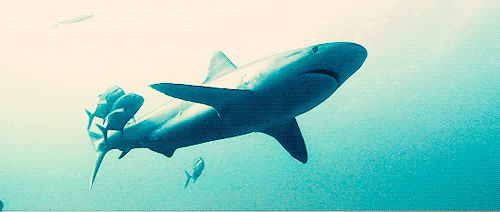Growing Independence and Fluency (GF) Design: Swimming With Sharks!

Rationale:
To comprehend reading, you must be a fluent reader. Fluent readers are able to read words quickly and accurately. Students can’t fully understand what they are reading without fluency! When a reader is fluent, they can take time to fully comprehend what they read instead of spending time decoding words. Students learn to read fluently by decoding, crosschecking, rereading, and mental marking. Reading stories and answering questions helps students understand what they are reading and develop good comprehension skills. Students will gain fluency and independence in reading by crosschecking after reading decodable texts and repeat readings.
Materials:
-
Timer/stopwatch for each pair of students
-
Sample sentences on the whiteboard for teacher to model
-
Peer fluency sheet (one per student)
-
Reading rate forms for teacher
-
Teacher fluency checklist (one per student) with attached comprehension questions
-
Pencil (one per student)
-
Class set of Sharks by Kira Freed
Procedures:
-
Say: “We are going to achieve one of our goals of becoming a fluent reader! Does anyone know what a fluent reader is? (Wait for students to answer). Yes! A fluent reader is someone who can read very quickly and correctly because they can recognize words easily! If we can recognize words easily, then we can understand the story better. Recognizing the word means you know the meaning of the word right when you see it. Being a fluent reader makes reading a lot more fun!”
-
Say: “First, I’ll show you what a less fluent reader looks like, compared to a fluent reader.”
Write the words “Fast shark” on the board. Read it slowly like a non-fluent reader would.
Say: “fffffaaaaasssssstttttt ssssssssaaaaarrrrrrkkkkkk.” “I read it as fast sark, but that doesn’t make sense. Let me go back and try to read that word again. Ssshhhhaaaarrrrrrkkkkk. Shark! Fast shark! Now I will read it faster and more smoothly to show how a fluent reader would read the sentence… fast shark. Did anyone notice any differences in the way the sentences were read? Did you notice that one was smoother and faster, while the other was shorter and choppier? The second is a fluent reader, which is what I want you all to be!” -
Say: “Now, I want everyone to read the book Shark at your seat. This story is about, you guessed it, sharks! You’ll learn all about what kinds of sharks there are, why they look the way they do, and even shark attacks! Do you think all sharks attack people? You’ll have to read to find out!”
-
Students will start by reading the book independently. Once they finish reading the whole book to themselves, they will be paired with a partner. They should each read the book aloud to their partner, and not help each other read while listening. Once they finish, stopwatches and record sheets should be passed out to each student (one stopwatch, two record sheets per group).
-
Say: “We are going to play a game now to figure out everyone’s fluency! Put your listening ears on to understand how to play! Reader 1 starts by reading the book. Reader 2 is in charge of the timer. Reader 2 will time how long it takes Reader 1 to read the first two pages. After Reader 1 finishes, Reader 2 record the time on the record sheet. After writing down the time, Reader 2 will read. Do this activity 3 times per partner! While you’re listening to your partner read, pay attention to how their reading changes each time they read. On your record sheet, mark any changes that you notice during their reading.
-
Once all of the groups have finished, have each individual student read to the teacher aloud. The students should bring their record sheet so the teacher can record their words per minute.
-
Say: “Okay friends, now we are going to answer a few questions about the story we read! Get out a sheet of paper and a pencil to write down your answers!
Comprehension assessment:
-
How long have sharks lived in the oceans? (since before dinosaurs walked on Earth)
-
How many kinds of sharks are there? (hundreds)
-
What are shark’s skeletons made of? (cartilage)
-
What gives human ears their shape that sharks also have? (cartilage)
-
Is a shark’s skin rough or soft? (rough)
Record sheet:
Title of book: ____________________________
Student’s name: __________ Date: __________
Partner’s name: __________________________
After 2nd reading
Time: _________ Notes:________________ Remembered more words?
_____________________ Read faster?
_____________________ Read more smoothly?
_____________________ Read with expression?
After 3rd Reading
Time: _________ Notes:________________ Remembered more words?
_____________________ Read faster?
_____________________ Read more smoothly?
_____________________ Read with expression?
Fluency sheet:
0---- 10 ----- 20 ----- 30 ----- 40 -----50 ------ 60 ------ 70 ----- 80 ----- 90 ------ 100
Reference: